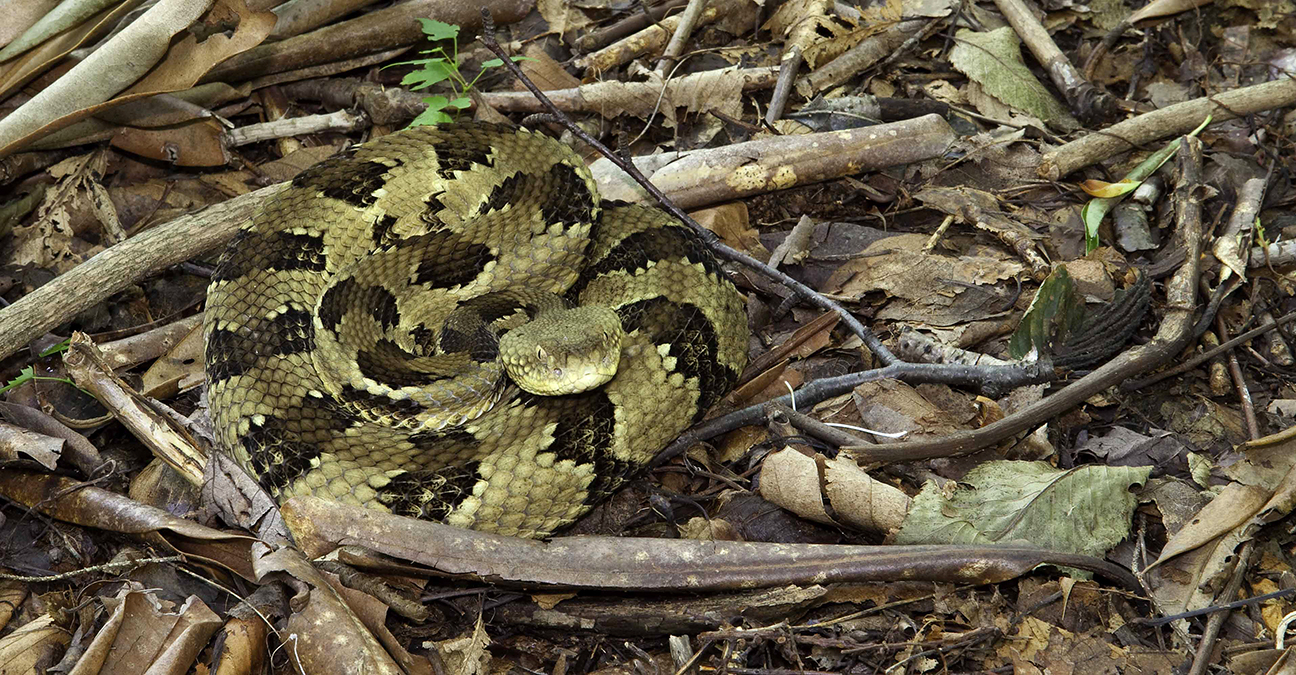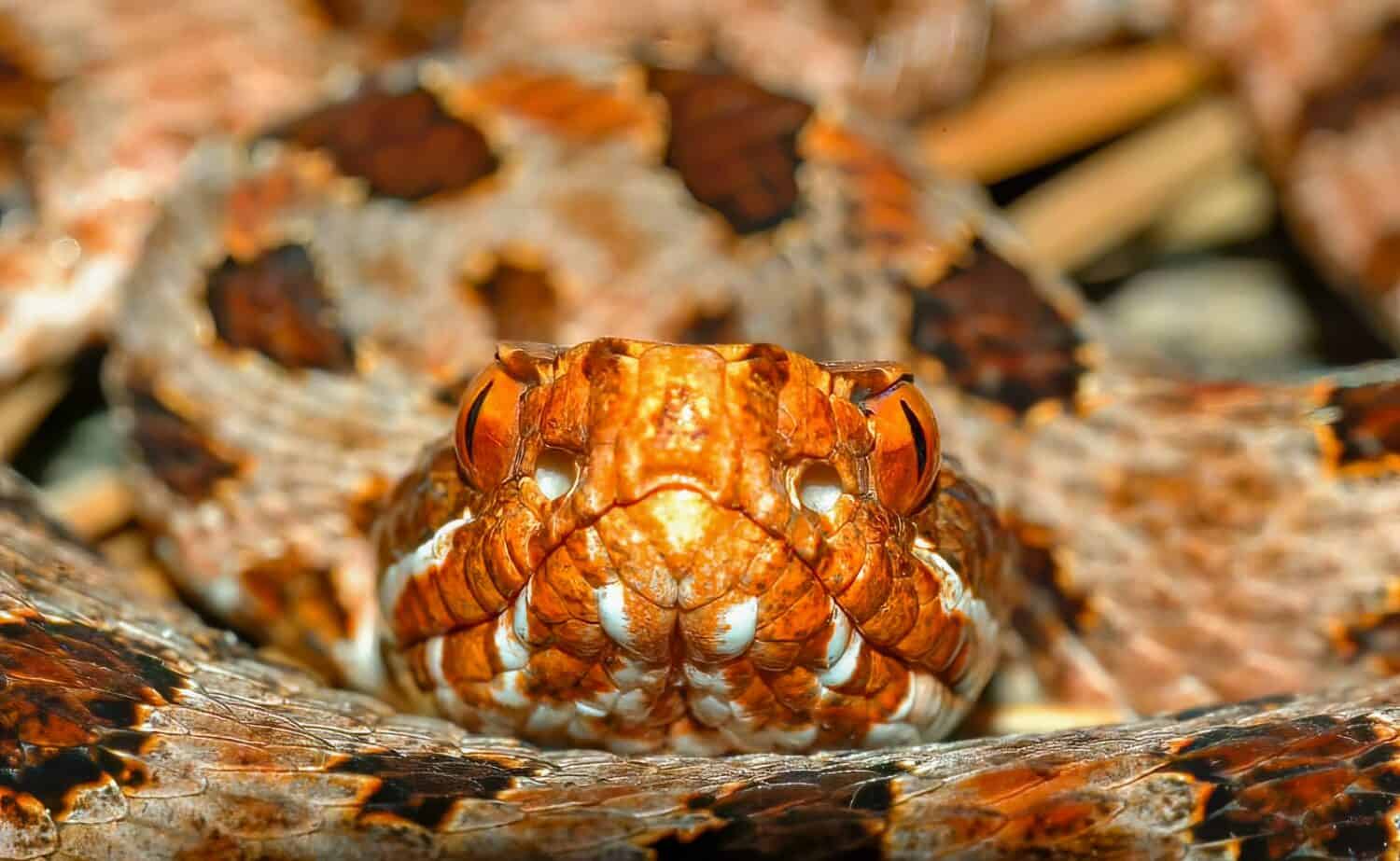Tennessee is home to a variety of wildlife, including two types of rattlesnakes. Encountering a rattlesnake can be alarming, but it’s important to know the different types of rattlesnakes in Tennessee to stay safe.
The two types of rattlesnakes found in Tennessee are the Timber Rattlesnake and the Western Pygmy Rattlesnake. The Timber Rattlesnake is the largest and most dangerous of the four venomous snakes in Tennessee, while the Western Pygmy Rattlesnake is much smaller and less dangerous.
You are reading: Discover The 2 Types Of Rattlesnakes In Tennessee
In this article, we will explore the characteristics and habitats of these two types of rattlesnakes found in Tennessee.

2 Types Of Rattlesnakes In Tennessee
Timber Rattlesnake

The Timber Rattlesnake, also known as the Canebrake Rattlesnake, is the largest and most dangerous of the four venomous snakes in Tennessee.
It is a large, heavy-bodied snake that can grow up to 60 inches in length and has a large, triangular head, vertical pupils, and the characteristic rattle at the end of the tail. The body coloration is highly variable, but is usually gray with a black tail, and black chevron-shaped crossbands occur all down the body.
Read more : 7 Types Of Turtles In Virginia
Timber Rattlesnakes prefer mature, heavily wooded forests with rocky, south-facing hillsides, and are often associated with bluffs or ledges. They can also be found around mountains, swamps, cane thickets, wooded stream corridors, and rural habitats.
It is common to see Timber Rattlesnakes coiled near fallen logs or sunning on rocks. Populations of Timber Rattlesnakes are declining across the region as a result of habitat loss and fragmentation, road mortality, and persecution.
Western Pygmy Rattlesnake

The Western Pygmy Rattlesnake, also known as the Pigmy Rattlesnake, is a small and colorful rattlesnake with a slender tail and tiny rattle.
It is one of the smallest species of rattlesnake in North America, measuring between 15 to 20 inches in length. The body color is gray or tan with an orangish-brown mid-dorsal stripe usually present, and there are dark blotches, typically bar-shaped, running along the length of the back with one or two rows of dark spots along each side of the body.
The Western Pygmy Rattlesnake is found in a variety of habitats, but is usually in close proximity to water. It occurs in flood plains, wetlands, and moist fields, and occasionally found in rocky uplands, pine woods, and glades.
Like other rattlesnakes, the Western Pygmy Rattlesnake has hollow fangs to inject venom into their prey, and heat-sensitive pits between the eyes and nostrils that allow them to detect and accurately strike warm-blooded prey (such as rodents) even in total darkness.
Read more : Discover The 7 Types Of Rattlesnakes In Utah
The Western Pygmy Rattlesnake is listed as Threatened by TWRA, and considered rare to very rare and imperiled by Tennessee Department of Environment and Conservation.
FAQS
1. Are Timber Rattlesnakes dangerous?
Yes, Timber Rattlesnakes are venomous and can be dangerous to humans. They are the largest and most dangerous of the four venomous snakes in Tennessee.
2. Are Western Pygmy Rattlesnakes dangerous?
While Western Pygmy Rattlesnakes are venomous, they are much smaller and less dangerous than Timber Rattlesnakes. However, it’s important to always treat any snake with caution and respect.
3. Where can I find Timber Rattlesnakes in Tennessee?
Timber Rattlesnakes can be found in a variety of habitats, including mature, heavily wooded forests with rocky, south-facing hillsides, mountains, swamps, cane thickets, wooded stream corridors, and rural habitats.
4. Where can I find Western Pygmy Rattlesnakes in Tennessee?
Western Pygmy Rattlesnakes are found in a variety of habitats, but are usually in close proximity to water. They occur in flood plains, wetlands, and moist fields, and occasionally found in rocky uplands, pine woods, and glades.
5. What should I do if I encounter a rattlesnake in Tennessee?
If you encounter a rattlesnake in Tennessee, it’s important to give it plenty of space and avoid disturbing it. Back away slowly and give the snake a chance to move away. If you are bitten by a rattlesnake, seek medical attention immediately.
6. How can I stay safe while hiking or exploring in areas where rattlesnakes may be present?
To stay safe while hiking or exploring in areas where rattlesnakes may be present, it’s important to wear sturdy boots and long pants, stay on designated trails, and avoid reaching into areas where you can’t see. Keep an eye out for snakes and listen for their distinctive rattle. If you encounter a snake, give it plenty of space and back away slowly.
Source: https://petstutorial.com
Category: Animals










